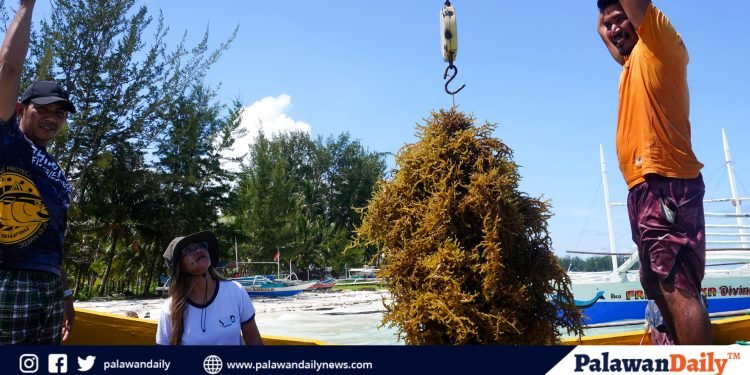The Bureau of Fisheries and Aquatic Resources (BFAR) announced that it will construct seaweed warehouses in four identified locations in the towns of Cagayancillo, Taytay, Agutaya and Roxas in the province of Palawan.
Specific locations of the four seaweed warehouses are in Mampio in Cagayancillo, Puleraquen in Taytay, Algeceras in Agutaya and Tumarbong in Roxas, all are considered major seaweed producing areas in Palawan.
Palawan is one of the country’s top and major seaweed producers, with its expansive reef areas and coastal shelves providing an ideal environment for seaweeds farming, especially in the Calamian Group of Island in the northern part of the province.
Seaweed refers to marine algae and plants that are a valuable source of nutrients possessing significant ecological and commercial uses. Ecologically, seaweed produces a large portion of the Earth’s oxygen, absorbs carbon dioxide, and creates vital habitats for marine life. For humans, it is a food source rich in vitamins, minerals, fiber, and antioxidants. Seaweeds are also sold to traders which is shipped to other places since it will be used in industries like cosmetics, pharmaceuticals, and agriculture as a fertilizer and in animal feed.
Seaweeds are propagated and cultured in a controlled environment before transplanting them to the open sea for farming. They propagates primarily through spores released by the mature seaweeds and grow into new plants on a substrate.
Palawan has an estimated 7,604 seaweed farmers based on the BFAR 2022 report. This represents the number of farmers utilizing 5,567 hectares of the 13,774 hectares of potential seaweed farming area in the province.
In a statement, the BFAR Mimaropa said that it convened prospective contractors in a Pre-Bid Conference on Thursday, August 28, 2025, to discuss several major infrastructure projects aimed at strengthening fisheries facilities and salt production across the region.
The pre-bid conference emphasized BFAR Mimaropa’s commitment to transparent and inclusive procurement processes. By engaging directly with contractors, the agency reaffirmed its goal of delivering high-quality fisheries and aquaculture infrastructure projects that will enhance local livelihoods and contribute to the sustainable development of the region’s fisheries sector.





















